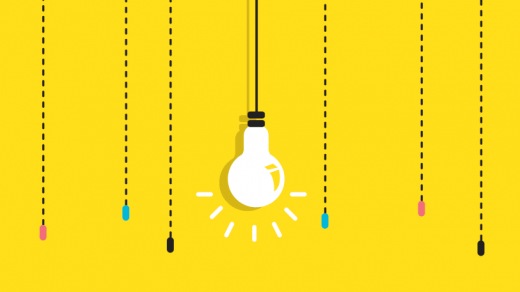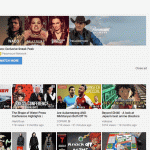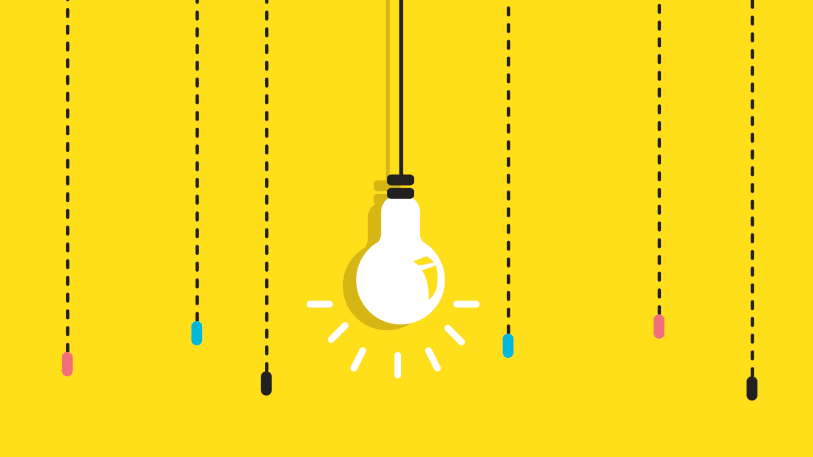How Netflix-ication Can Deliver A Waste-Free Circular Economy
For roughly 120 years, music lovers liked to own what they listened to. We bought vinyl records, four-track cartridges, tapes, CDs, and so on, and stacked them pedantically in our living rooms. We wanted our tunes close and available, and the physicality of the sleeves and minutiae of the liner notes was part of the experience. Until one day it wasn’t. Though vinyl continues to have a niche, in 2017 many of us make do with Spotify, or a similar subscription service. It’s the same with movies and TV. Nobody in their right mind would buy hundreds of DVDs or Blu-ray discs now, especially at $20 a pop. Netflix does much the same job, and if it doesn’t, we can call on any number of other on-demand services.
You can see this process of dematerialization in lots of areas of life. We store files in the cloud rather than on a computer. We take Ubers and Zipcars instead of buying cars (millennials are purchasing cars at a lower rate than previous generations, though the trend has been somewhat overstated). All sorts of products are becoming services, particularly in the business-to-business world. You can lease office carpets by the month, rather than buying them by the yard. You can rent lighting as a service (from Dutch giant Phillips). You can get tires by the kilometer (from Michelin). Or printing by the page. And on the consumer side, it’s now possible to rent clothes, bikes by the minute (like Citi Bike), washing machines, and nightly food kits (to name a few examples). These are all services that once were sold primarily as products.
Ending “Take-Make-Dispose”
There are some things that probably will always be sold for ownership because turning them into services doesn’t make economic sense. But it’s possible that more and more stuff will become services in the future, with huge implications both for business and the environment. The product-as-service model is one of the key ways we might move from a predominantly “take-make-dispose” type of economy (that is, take raw materials, make something, and throw it away when it no longer works, or is no longer fashionable) to an economy that’s more circular or regenerative. Companies will retain ownership of their products, maintaining them and remanufacturing them, extending life cycles, and reducing the world’s gargantuan waste pile. On a planet of finite resources, and in an age of increased expectations around experience, services are likely to make increasing sense in category after category.
“It’s not necessarily possible now, but you can imagine in 5 or 10 years where technology has enabled vast swathes of products to be offered as a service,” says Peter Lacy, global managing director for sustainability services at Accenture, a consultancy firm. “In some cases, the actual ownership structure won’t change, but the stewardship of natural resources through global value chains will function in a different way.”
Technology like the so-called internet of things put sensors on everything, allowing companies to track usage, measure performance, and investigate new business models. GPS enables Zipcar to manage floating car pools and for car companies to introduce “mobility services” (such as General Motors’s Maven, BMW’s ReachNow, or Daimler’s Car2go). Apps let cities like Helsinki integrate transit, bike, and car rental options, raising the possibility that car ownership in congested urban centers will become a thing of the past. Modular design techniques allow products to be made in pieces, so that defective parts can be swapped out and in again without scrapping the whole item.
The shift to services changes the environmental calculus for companies, as Lacy discusses in Waste to Wealth, a book he wrote with Jakob Rutqvist, an Accenture colleague. For one thing, manufacturers and customers have a better alignment of interests. Whereas in the past, companies might have employed a planned obsolescence, hoping that their product would break down eventually, so we would buy a new version, with product-to-service they now have an incentive for the product to last as long possible. Their greatest cost is to send out a technician to maintain something, or to replace it entirely. They also have an incentive to use higher-grade materials, to engineer for longevity and reusability, or to design something so it can be taken apart and repurposed, rather than thrown into a landfill.
Desso, a Dutch flooring company, offers a carpet-leasing service. It takes care of installation, maintaining carpets over their lifetimes, and removes its product when customers no longer want them. At which point, it strips out the carpet fibers (it also takes in its competitors’ products), reconditioning the old fibers into new material and converting the carpet backing into roof and road materials. “The company that maintains ownership of a product is in the best position to maintain and reuse it,” says Joe Iles, an editor at the Ellen MacArthur Foundation, a U.K. nonprofit focused on the circular economy. “As a rule of thumb, the inner loop of [the value chain] is where the most value is created, both environmental and economic.”
Making It Possible To Invest In The Future
Services also allow companies and individuals to invest in more sustainable equipment, including solar panels, high-efficiency building systems, and infrastructure like modular wastewater plants and municipal street lighting. Selling solar as an energy service, where “third-party” installers like SolarCity and SunRuns retain ownership and charge monthly fees, persuaded millions of home owners to take the plunge. If solar cost $20,000 up front, many adopters surely would have stuck with traditional utility electricity instead. Similarly, startups like Generate Capital (cofounded by solar pioneer Jigar Shah) and Washington, D.C.-based SparkFund are funding water and food infrastructure and energy efficiency upgrades for businesses, amortizing costs into manageable monthly fees.
SparkFund CEO Pier LaFarge argues that services are an easier sell than products because companies don’t have to add assets to their balance sheets and tie up capital that could be used for more immediate priorities. Energy efficiency upgrades, like LED lighting or new HVACs, may pay for themselves, but a lot of managers don’t want to commit the resources in hopes of getting the long-term payoff, he says. And they don’t want the hassle of having to manage installation and maintenance.
“For 30 years, the energy efficiency industry has approached its customers as if they’re idiots who are missing an obvious win,” he says. “Our customers are not idiots. They make quite rational choices within constrained options. If it’s a choice between energy efficiency and having cash for hiring people or investing in production equipment, it’s rational not to invest in energy efficiency.”
SparkFund collaborates with installation partners and covers repairs, monitoring, and ongoing service in return for a monthly fee. It guarantees performance improvement to a contractual standard, and, if the upgrades don’t deliver savings, it promises to return its fee. It’s completed about 100 projects to date, including a multi-building program with the South Bronx Overall Economic Development Corporation (SoBRO), in New York City. By installing dozens of 18-watt LED lamps, it has pledged to save the nonprofit $510,000 per year over four years. Typically, says LaFarge, such deals work on a 60/30/10 basis, where the equipment costs $60, a service levy costs $30, and the customer saves $10 on their previous bill. In other words, they get higher grade equipment at no risk.
“I think in 10 years if someone says, ‘Oh I spent $5,000 [of my own money] on new lighting systems,’ you will look at them like they are crazy,” LaFarge says. Energy systems, batteries, HVACs, lights, controls, and solar will all be sold on a subscription basis, he argues.
A New Booming Services Economy
Shifting to a service model does entail some big challenges for companies. They need to move from selling products and generating profits to leasing them and getting annuity payments. Plus, they need new maintenance teams and perhaps a new approach to R&D.
“It’s hard for an incumbent company to go on such a dramatic transformation,” says Steve Swartz, a partner at the McKinsey Center for Business and the Environment, and an expert on circular economy business models. Becoming a service operator might change how investors view a company stock and where it fits in an investment portfolio.
But, as SparkFund and Generate Capital show, there’s an opportunity for third parties to fill in the financing gap. “I can envision an entire asset class emerging around [this],” Swartz says. “Aircraft-leasing companies buy airplanes and then hold the asset and collect rents from airlines. You could see that model moving into many more sectors of the economy.” Banks like ING in the Netherlands–a circular economy hotbed–are developing finance options for product-as-service shifts.
The idea of the circular economy dates back to the 1970s. But it’s only with the internet, fears about resource scarcity, and the realization that take-make-dispose models are inefficient, that it’s really started to take off. Since the turn of the century, resource prices (e.g., for metals) have reversed a 40-year trend of constantly dropping prices as economic growth increased. Between 2000 and 2014, prices went up as economies like China and India took off. Turning products into services is one way to achieve prosperity by using fewer resources. Any high-end durable good, where manufacturers have an incentive to maintain ownership of valuable materials and where customers want regular upgrades, could be ripe for service models, Lacy and Rutqvist say in Waste to Wealth.
In the future, we may think of products not as stuff to own, but for their function. Why buy a car–which on average sits idle 95% of the time–if what you really want is mobility? Likewise, why clutter up your home with tools and appliances if you use them only occasionally? Moving to a service economy makes sense from an environmental and business perspective, but also because owning things is often a hassle we could do without.
Fast Company , Read Full Story
(90)














